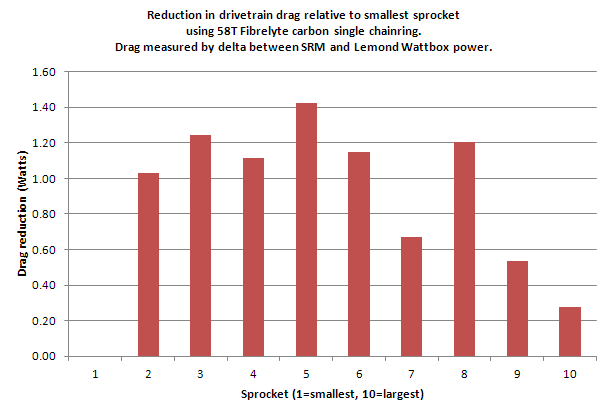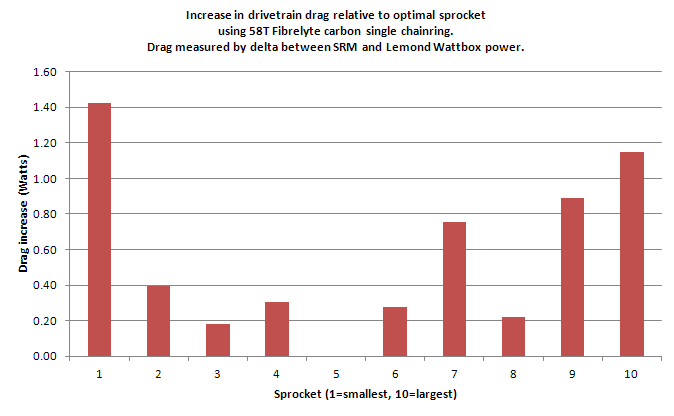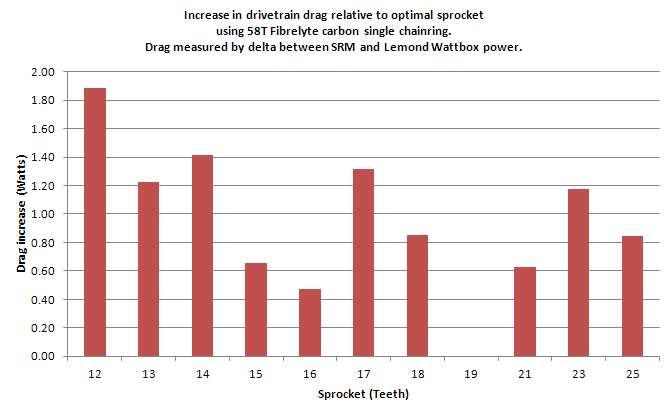I have a poorly maintained road bike -- cassette, chainrings and chain are all ready to be replaced after a long, messy season. And the chain is dirty right now.
Tonight I was messing around with my kickr a bit and comparing the watts in erg mode vs my quarq. The good news is that they are basically the same. There is a little bit more noise in the quarq data, so the NP is smidge higher, but the average power was exactly the same after 1:20 of riding.
The interesting thing was that that I was able to tell the difference between when I was cross chained and when I was in a good chainline. I noticed it subjectively at first, then did a mini experiment.
Set at 250 watts in erg mode (wahoo fitness app). All were 5 minute tests. 53/39 chainrings. 11-26 cassette. Spindown kickr and rezero quarq between each test - although all offsets were identical (140 for quarq and 254 for kickr)
53 x 12 - quarq read 249 watts
53 x 26 - quarg read 263 watts
39 x 23 - quarq read 251 watts
39 x 11 - quarq read 261 watts
I had no idea that a good chainline vs cross chaining was worth 5%. That's huge.
Andy
Edit to add: The cassette on the kickr is basically new. It wasn't clear the way I wrote it. Chain is dirty and worn. Chainrings are just worn.
Tonight I was messing around with my kickr a bit and comparing the watts in erg mode vs my quarq. The good news is that they are basically the same. There is a little bit more noise in the quarq data, so the NP is smidge higher, but the average power was exactly the same after 1:20 of riding.
The interesting thing was that that I was able to tell the difference between when I was cross chained and when I was in a good chainline. I noticed it subjectively at first, then did a mini experiment.
Set at 250 watts in erg mode (wahoo fitness app). All were 5 minute tests. 53/39 chainrings. 11-26 cassette. Spindown kickr and rezero quarq between each test - although all offsets were identical (140 for quarq and 254 for kickr)
53 x 12 - quarq read 249 watts
53 x 26 - quarg read 263 watts
39 x 23 - quarq read 251 watts
39 x 11 - quarq read 261 watts
I had no idea that a good chainline vs cross chaining was worth 5%. That's huge.
Andy
Edit to add: The cassette on the kickr is basically new. It wasn't clear the way I wrote it. Chain is dirty and worn. Chainrings are just worn.
Last edited by:
AndyPeterson: Nov 28, 14 19:28


